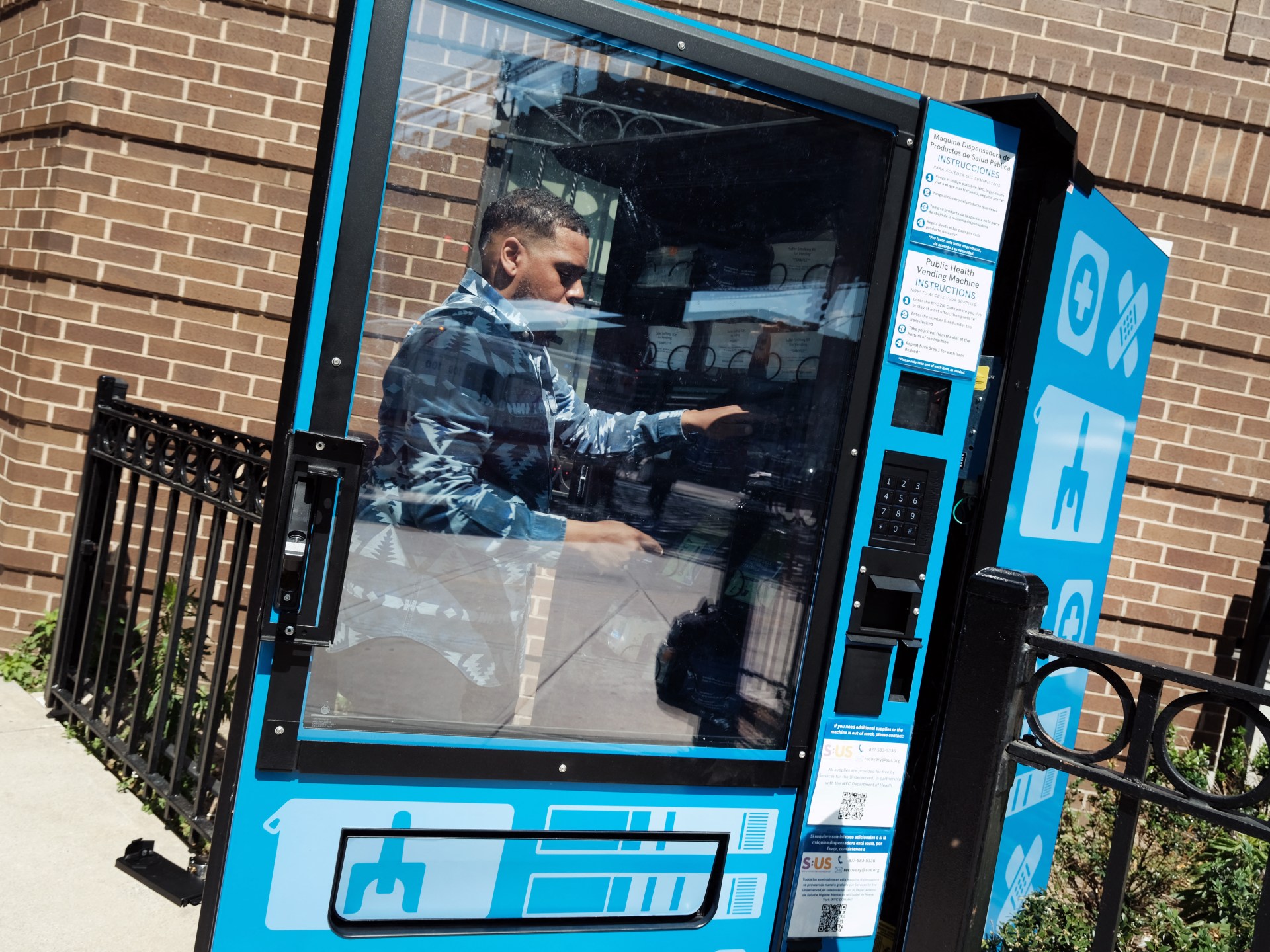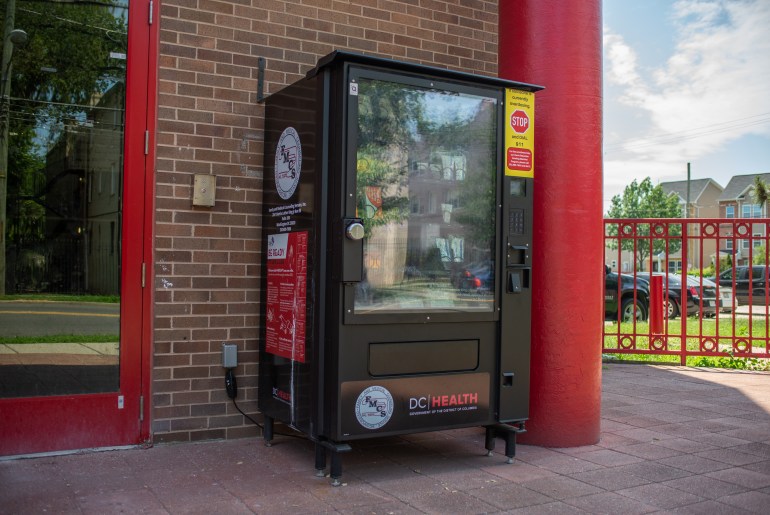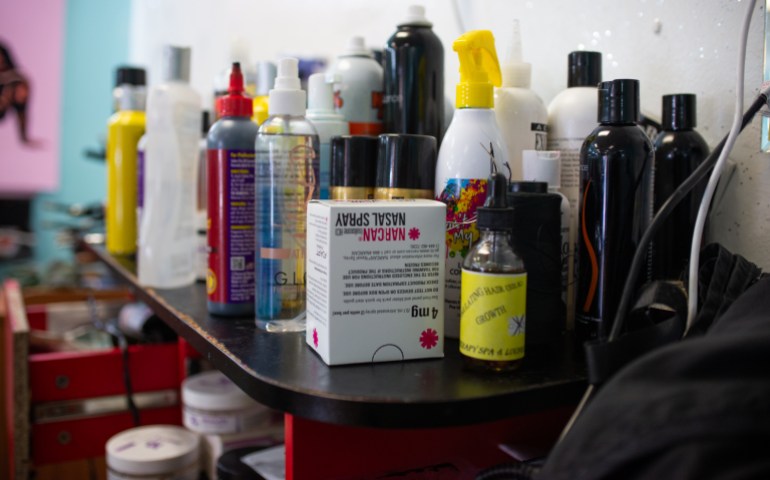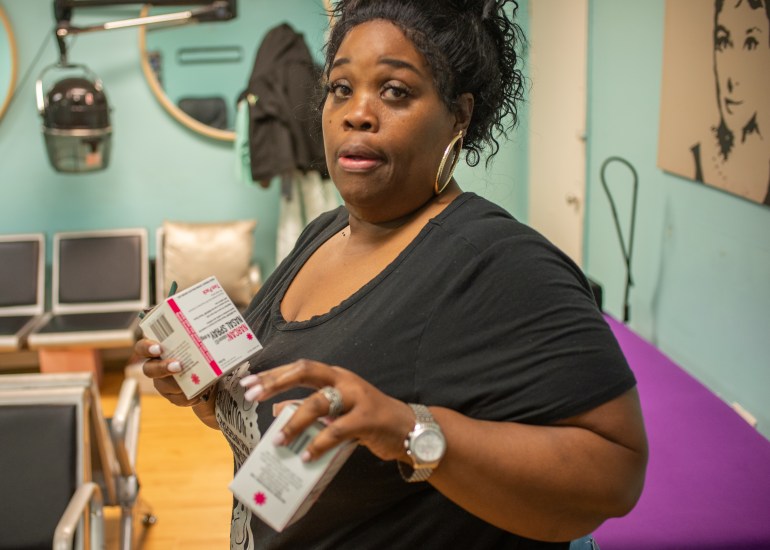
Washington, D.C. – It was a hot summer day in July when Shekita McBroom received a call from a local hair salon.
The hairdresser on the other end of the line urgently needed a refill – not of hair dye or shampoo, but of the overdose drug naloxone.
Naloxone, commonly known by the brand name Narcan, is a life-saving medication that is often taken as a nasal spray to counteract symptoms Opioid Consumption.
But to McBroom, a community advocate in Washington, D.C., it was no surprise that a hair salon had a backroom stash of the drug Prevent overdoses. If anything, she would like to see naloxone become more widely available, including through vending machines.
“I’m trying to provide people with more options because they don’t always know where to find it,” she told Al Jazeera. But she sees vending machines as a practical solution: a quick and easy way to provide emergency care at any time of day, in neighborhoods where care might otherwise be limited.
More and more communities across the United States are adopting this approach. In 2023, there was a boom in vending machines dispensing free overdose medications — as well as fentanyl test strips, clean needles and other “harm reduction” items.
USA “behind everyone” in adopting the method
Washington, DC, was one of several cities to launch a vending machine program this year. There are currently seven vending machines staffed by two local health organizations.
Four of those machines, monitored by Family and Medical Counseling Service Inc., dispensed 204 packages of Narcan from October to November. That meant that on an average day, about three boxes of Narcan, each containing two doses, made it to those in need.
“We were surprised at how much activity the machines can actually do,” said Angela Wood, the group’s chief operating officer.
She pointed out that the vending machines don’t require users to reveal personal information — or even interact with a real person, reducing the potential for stigmatization.
“It is a way for people to access these products at their own pace and in their own way, without having to fully commit to a program,” she told Al Jazeera.
Chicago also launched a pilot program for naloxone vending machines in November, and New York City opened its first machine in Brooklyn in June.
There has also been progress at the state level. West Virginia, Wisconsin, Vermont, Missouri, Kansas and Connecticut have either introduced or approved the use of the vending machines this year.
Even tribal governments have adopted the strategy. In April, the Pala Band of Mission Indians installed the first naloxone vending machine on tribal lands in the United States. Four months later, the Tulalip Reservation in Washington state set up its own machine.
According to Rebecca Stewart, an assistant professor at the Penn Center for Mental Health who studies substance abuse treatment, the proliferation of the vending machines has been dramatic.
“They’re really popping up all over the country,” she said.
The trend began in the U.S. just five years ago, in 2017, with a vending machine program in Nevada. But as Stewart pointed out, similar programs have existed for years in Europe, Australia and even Puerto Rico.
“The United States is kind of behind everyone on this,” she said. “In terms of harm reduction machines, these have been used around the world for decades. And so these implementations in the United States are just beginning.”

Escaping the “moral hazard” argument
One of the biggest hurdles to vending machine adoption has traditionally been public opinion.
Stewart said many Americans – including politicians and policymakers – feared the vending machines would encourage drug use by making the practice safer. She calls it the “moral hazard” argument.
Even this year, officials repeated that line of thinking. Kentucky installed its first naloxone vending machine in 2022, but some local politicians remain opposed to expanding it to neighboring counties.
“They’re basically encouraging and empowering people who have a problem with drugs rather than maybe trying to help them get off drugs,” Nelson County Judge Tim Hutchins told TV news station WHAS11 in February.
Still, overdose deaths continue to rise in the United States. Each year since 2021 more than 100,000 people died from drug overdoses – twice as many as in 2015.
Most of these overdose deaths have been linked to opioids, with experts blaming the emergence of synthetic drugs Fentanyl that the death toll has skyrocketed.
Ryan Hampton, an activist and organizer focused on addiction, sees the proliferation of vending machines as evidence of the immediacy of the opioid crisis.
He worries that the U.S. continues to overlook “harm reduction” strategies as a tool to reduce mortality rates. The term “harm reduction” is generally used to describe methods that can help prevent overdoses or other consequences of drug use, such as the transmission of disease through needle sharing.
“Harm reduction has been a stigmatized strategy for too long,” Hampton said.
Instead, he explained that the U.S. has invested more in a “prevention/prohibition model” that eliminates drug use in the first place. The result, he added, is that few resources have been devoted to combating overdoses and other drug-related harms.
“What is being invested does not at all correspond to the demand for the services or the scale of what is currently needed,” he said.
“Given the toxic drug supply we face, harm reduction must be a mechanism we use in every possible setting, be it vending machines or community care settings.”
Stewart, for her part, has noted a shift away from the notion that naloxone is an “enabler” of opioid use.
Rather, their research, focused on Philadelphia, found that community members were open to the prospect of overdose medications being available in vending machines.
“In our discussions with these various stakeholders, we found that Narcan was widely accepted,” she added. “And I think that’s a really promising finding because I don’t think Narcan was widely accepted five years ago.”

Less technology, better access
But the vending machines themselves are not a panacea. Care also needs to be taken in how they are used, said Nabarun Dasgupta, senior scientist at the Injury Prevention Research Center at the University of North Carolina at Chapel Hill.
As co-founder of Remedy Alliance/For the People, an organization that aims to make naloxone more readily available, Dasgupta said he has seen unnecessary demands placed on the use of the vending machines.
For example, several jurisdictions require machines to be cooled. But Dasgupta called that requirement a costly “commercial misdirection” that was unnecessary for the storage of naloxone.
“The better version of the vending machine paradigm is to rely on lower technology [and] higher access,” Dasgupta told Al Jazeera.
He believes community input is key to developing programs that reach the people whose needs are greatest. He pointed out that a startup is using old newsstands on city streets to distribute naloxone in Michigan.
“I think if 100,000 people die from overdoses every year, something is wrong,” Dasgupta said. “It is time for new solutions. And the vending machines are part of a generation of new solutions.”
Additional changes are also underway to make naloxone more accessible throughout the United States.
In March, the federal Food and Drug Administration (FDA) approved the first naloxone nasal spray for use without recipewhich paved the way for drugstores, corner stores and gas stations to stock the product for over-the-counter use.

A personal battle
Back in Washington, DC, community representative McBroom discovered an empty vending machine at her friend LaShaun Love’s hair salon.
Where snacks once stood for sale, McBroom imagined naloxone and other “harm reduction items” lined up on the vending machine’s shelves for anyone who needed them.
And the need in Washington, DC is great. In 2022, the city experienced 448 opioid-related overdose deaths, one of the highest per capita rates in the country.
Love, the salon’s owner, revealed that she had a box full of Narcan on hand just in case.
“I usually have one here in my station and then another at the front,” she told Al Jazeera. This allows residents to have easy access.
“They knock on the door and say, ‘Miss Shaun, do you have Narcan?’ Even paramedics have asked me to do it.” Requests from the community come weekly, if not daily, Love added.
For McBroom, the fight to prevent overdoses is personal. Her own daughter Jayla died in 2021 at the age of 17 as a result of a fentanyl overdose.
She hopes to see more vending machines integrated into the community where they can have the most impact.
“The person who needs Narcan could be your family,” she said. “Wouldn’t you rather they had access to something that could ultimately save their lives?”






Recent Comments